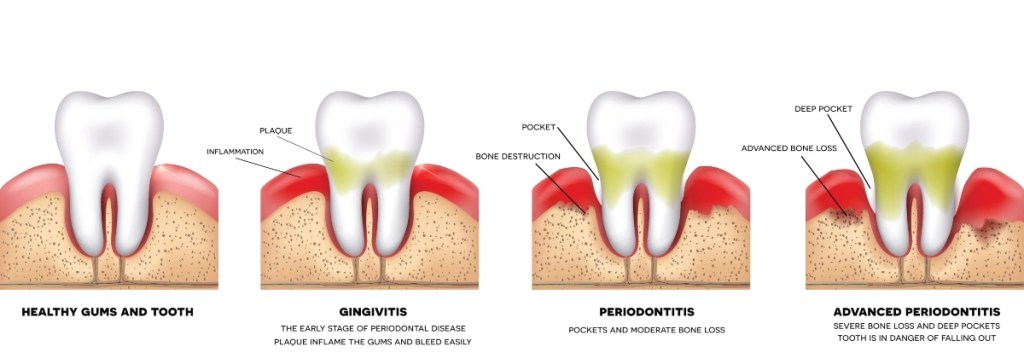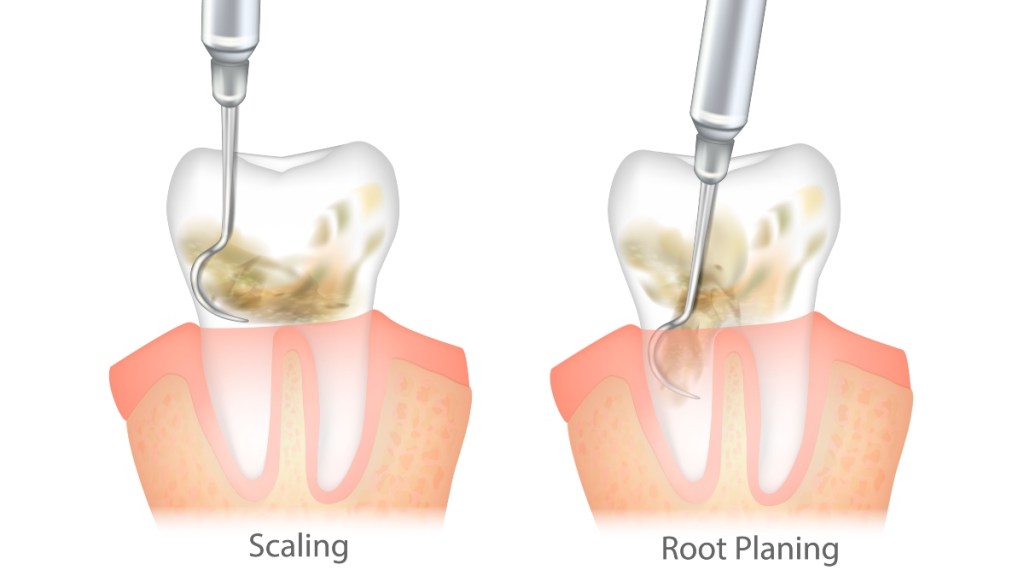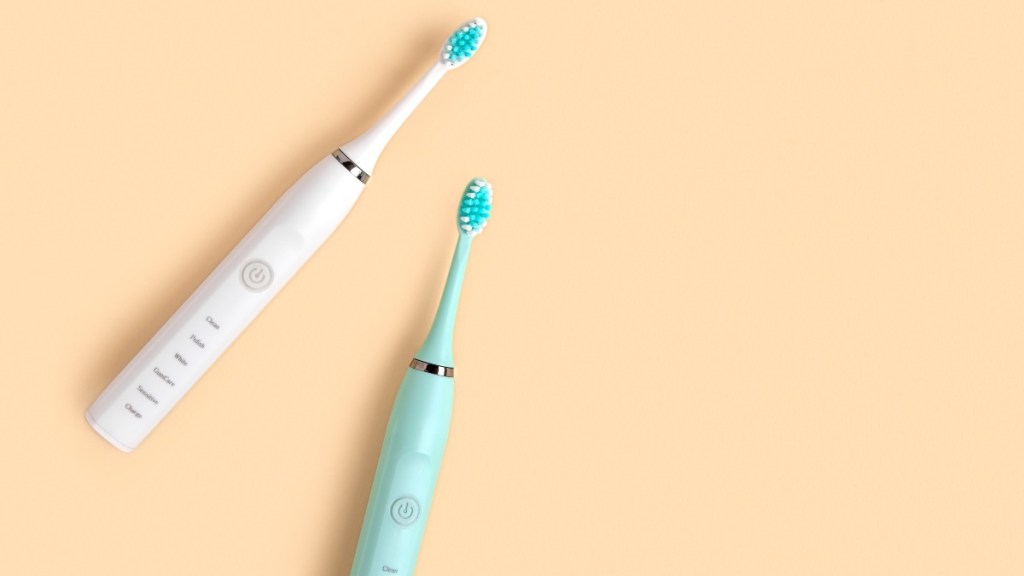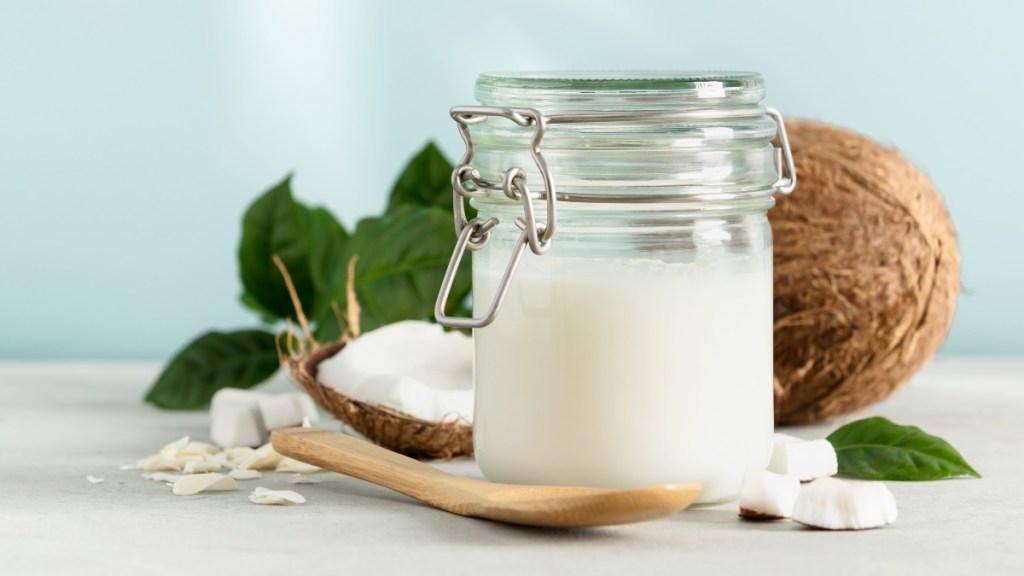These Easy, Surprising Self-Care Tips Can Reverse Gum Disease, Say Dentists
The best part: A healthy mouth reduces the risk of depression, stroke and Alzheimer's

Sure, you know that maintaining good oral hygiene is important for your dental health. It means better breath, fewer cavities, and healthier gums. But keeping your mouth healthy can have total-body benefits as well, including slashing your risk of stroke and memory troubles. Here, we share everything you need to know about gum disease self-care, including how to reverse gum disease, the home remedies that can help keep your gums healthy, and whether gum disease is curable.
What is gum disease?
First, a quick reminder: “Teeth are held in place by the jawbone, and gum covers the tooth, much like a curtain covers a window,” explains Teresa Yang, DDS, a Los Angeles-based dentist and author of Nothing But the Tooth: An Insider’s Guide to Dental Health. Healthy gums are typically pink, firm to the touch, and don’t bleed during brushing or flossing.
But having perfectly healthy gums isn’t as common as you may think. Nearly 50% of adults over age 30 have some form of gum disease, also known as periodontal disease. And that number only increases with age. “The first stage of gum disease is called gingivitis, or an inflammation of the gums,” Dr. Yang notes. This inflammation is due to the build-up of plaque around your teeth, which is mostly made up of unhealthy bacteria.
“Billions of tiny organisms live in your mouth,” explains dentist Kami Hoss, DDS, co-founder of The Super Dentists and author of If Your Mouth Could Talk. “In a healthy state, these microbes are in harmony, aiding the mineral transfer between teeth and saliva. However, if your mouth’s health deteriorates, this microbial balance can tip, turning beneficial microbes harmful. When a mouth starts deteriorating in health, gingivitis sets in.”
If gingivitis goes unchecked, over time it can progress to the second stage of gum disease, periodontitis, which is more serious. “As gum disease worsens, periodontitis occurs where some of the bone that anchors a tooth in place is lost,” says Dr. Yang. “This can lead to the tooth loosening, becoming infected, and even result in the loss of the tooth.”

Common signs of gum disease
“Since gingivitis often doesn’t hurt, it can remain undetected for a long time,” says Dr. Hoss. Indeed, regular visits to the dentist may be the only way to catch gingivitis before it progresses to periodontitis and becomes more serious. At that point, or right before it progresses, you may notice the following signs:
- Bleeding during brushing or eating
- Red, swollen, or tender gums
- Receeding gums
- Bad breath
- Tooth looseness, movement or loss
- Pus seeping from gums
What increases the risk of gum disease?
There are several key factors that can increase your odds of developing gum disease. One of the biggest is age. The CDC estimates that roughly 68% of people 65 and older have gum disease. One reason is because plaque has been building up on teeth over a longer period of time. And since many older adults don’t have dental insurance after retiring, they’re less likely to visit their dentist for the routine cleanings that could catch gum disease earlier. What’s more, folks over 65 are more likely to take medications that can contribute to dry mouth, which allows bacteria to breed. And for those wearing dentures, a poor fit or improper cleaning can set the stage for bacteria growth, too. (Click through to learn what doctors and dentists want you to know if you routinely wake up with a dry mouth.)
Another common trigger for gum disease in women is menopause. Your gums are highly susceptible to hormone changes, which makes it harder for your body to maintain a healthy balance of oral bacteria and fend off infections. Your odds of osteoporosis, or weakened bones, increase during menopause, too. This includes the jawbone, which can allow teeth to shift or feel loose. Finally, because saliva production slows during menopause, your odds of dry mouth increase, which ups the risk of bacteria growth.
But those aren’t the only culprits behind gum disease. Other risk factors include:
- Smoking or tobacco use
- High stress levels
- Misaligned teeth or improper bite
- Genetic predisposition
- Previous antibiotic use
- Aggressive oral care products that disrupt the bacterial balance in the mouth
- Faulty dental fillings
- Use of certain medications, such as steroids or anti-seizure medications
Is gum disease curable?
Good news: The answer in most cases is yes! “In its early stage, gingivitis is completely reversible and good oral hygiene is the key,” says Dr. Yang, who adds that a dentist or dental hygienist is the best person to assure you that your oral hygiene is on track. But if gingivitis progresses to periodontitis, the damage that occurs can be permanent.
“This severe gum infection causes irreversible damage to the tooth’s support systems like the gums, alveolar bone, cementum, and the periodontal ligament,” Dr. Hoss explains. “In the early stages, non-invasive treatments like scaling and root planning can be effective, where the dentist removes tartar (aka hardened plaque) from teeth and roots. But as the disease worsens, surgical interventions such as pocket reduction, gum grafts, laser treatments, and regenerative procedures might be needed. Depending on the severity, your dentist might also suggest local or systemic medications.”

Experts agree that the best method for dealing with gum disease is to take steps that will prevent it from ever progressing to periodontitis in the first place. (That’s why gum disease self-care is so important!) And doing so won’t just keep your mouth healthy — it’ll protect your heart, brain and mood, too.
The all-body benefits of healthy gums
When your gums are free of bacteria and plaque build-up, your entire body gets a boost. Here’s how gum disease self-care can benefit your body from head to toe:
1. Your risk of depression drops
Plaque and tartar build up along the gums can cause pain, embarrassingly bad breath, and even loss of teeth, making it difficult to enjoy your everyday life. But research published in the journal BMJ Open suggests reversing gum disease may reduce your risk of anxiety and depression up to 37% by blocking these health hassles.
2. Your risk of stroke drops
They might not seem related, but your gums play a role in keeping your heart healthy. In fact, research suggests that folks without gum disease are up to 50% less likely to have a stroke than those with gum disease. The link: Gum disease causes inflammation, which can spread body-wide and increase the risk of plaque accumulation in the arteries. What’s more, bacteria in the mouth can enter the bloodstream, where it can damage cells lining the arteries and lead to a stroke-causing clot. (Click through for more easy stroke prevention tips.)
3. Your risk of Alzheimer’s disease drops
In the same way that oral bacteria can travel through the bloodstream to impact the heart, it can also affect your brain and spur memory-damaging inflammation. But keeping your gums healthy can potentially reduce your risk of memory loss. A study in Alzheimer’s Research & Therapy suggests that those with healthy gums may be up to 70% less likely to have Alzheimer’s than those with periodontitis. For more on the link between gum disease and Alzheimer’s, check out the video below.
How to reverse gum disease with self-care
Keeping your mouth and smile in tip-top shape doesn’t have to be hard. These simple self-care remedies can reduce plaque build-up and reverse gum disease.
1. Start with a dry toothbrush
Before you get to brushing with toothpaste like your normally do, spend two minutes “pre-brushing” with a dry toothbrush. A study published in the International Journal of Dental Hygiene found that this strategy cuts plaque buildup by 58%. Credit goes to the way the dry brush bristles are better able to whisk away some of the stickier plaque along the gumline.
2. Brush and floss daily
We know that you know this one, but it really is that important. “Brush your teeth twice a day for two minutes,” says Dr. Yang. “The most important time to brush is right before bedtime,” since the foods we eat during the day can contribute to plaque build-up. “And floss or use a water flosser to clean in between your teeth,” Dr. Yang adds.
Tip: If you have a regular manual toothbrush, it might be time to switch to an electric one. A study in the Journal of Clinical Periodontology found that folks who used electric toothbrushes had 22% less gum recession and 18% less tooth decay than those using a manual brush. (Click through to see the best electric toothbrushes for receding gums and find out how often you should replace your toothbrush.)

3. Choose the right toothpaste and mouthwash
“For home maintenance, it’s essential to choose and use the right oral products,” says Dr. Hoss. For toothpaste, he recommends looking for one that contains nano-hydroxyapatite, which has been shown to restore degraded surfaces of teeth, according to research in Odontology.
“An alkaline mouthwash (with a pH above 7) containing nano-hydroxyapatite and natural anti-inflammatory components like MSM (Methylsulfonylmethane) and vitamin C can be beneficial in both preventing and managing early gum disease,” Dr. Hoss adds. The alkalinity will help maintain the bacterial balance in the mouth, while the anti-inflammatories tame swelling.
Dr. Hoss’s company SuperMouth makes a toothpaste and mouthwash that fit the bill: SuperMouth Hydroxamin Toothpaste (Buy from SuperMouth, $14.99) and SuperMouth Hydroxamin Mouthwash (Buy from SuperMouth, $16.99). More smart picks: Boka Nano-Hydroxyapatite Toothpaste (Buy from Amazon, $11.99) and Dr. Brite Anti-Plaque Mouthwash (Buy from DrBrite, $12.99).
4. Take a probiotic lozenge
Since the balance of bacteria in the mouth plays such a crucial role in the development of gum disease, it’s no surprise that good bacteria known as probiotics can help. Scientists reporting in the International Journal of Pharma and Bio Sciences found that taking a mouth-friendly probiotic lozenge for 30 days cut plaque by 44%, reduced gingivitis by 42%, and curbed gum bleeding by 52%. They cite a strain of good bacteria called S. salivarius, or M18, for its ability to kill of S. mutans, a microbe responsible for the development of gum disease. What’s more, study participants continued to see results even a month after they stopped taking the lozenge. One to try: Life Extension Florassist Oral Hygiene (Buy from Amazon, $13.50). (Click through to see how eucalyptus essential oil cuts gum bleeding, too.)
5. Sip cranberry juice
Or add the sweet-tart berries (fresh or frozen!) to your morning smoothie. When it comes to gum disease self-care, this is one of the easiest and most delicious fixes. According to research published in the British Dental Journal, cranberries contain powerful polyphenols and phytochemicals. These beneficial compounds reduce the ability of bacteria to stick to gums by up to 85%. (Click through to learn how cranberries can prevent a UTI, too.)

6. Opt for green tea gum
Chewing gum after you eat increases saliva production, which can go far toward keeping your mouth healthy. “Saliva plays a key role in maintaining the right pH level, nourishing the microbiome, and offering protection against infections through antibodies,” explains Dr. Hoss. In a study in the Journal of Dentistry, people who chewed green tea gum for 15 minutes twice daily saw a 68% decrease in plaque buildup and a 70% decrease in gum bleeding after three weeks. Why green tea in particular? It contains catechins and EGCG, compounds that thwart inflammation and bacteria accumulation. One to try: Xyloburst Green Tea Gum (Buy from Amazon, $16.99).
7. Swish with coconut oil
After your nighttime tooth brushing session, swish 1 Tbs. of organic cold pressed coconut oil in your mouth for five minutes. (Spit the oil into your trashcan when finished to avoid clogging your sink.) This traditional medicine self-care technique, known as oil pulling, tamps down gum disease-causing bacteria build-up.
A study in the Journal of International Society of Preventive & Community Dentistry found that swishing daily was as effective as a standard mouthwash at reducing levels of harmful S. mutans. “Coconut oil, which contains lauric acid, transforms into a soaplike substance in the presence of saliva,” Dr. Yang says. “When done properly, the viscous oil becomes thinner and milky white.” Not a fan of coconut oil? Dr. Yang says that organic sunflower or sesame oil would work, too.

For more ways to safeguard (and brighten!) your smile:
One Change to Your Brushing Routine Will Give You Whiter Teeth
10 Best Electric Toothbrushes for Receding Gums of 2022
Cosmetic Dentists: The 7 Best At-Home Ways To Whiten Sensitive Teeth
This content is not a substitute for professional medical advice or diagnosis. Always consult your physician before pursuing any treatment plan.














